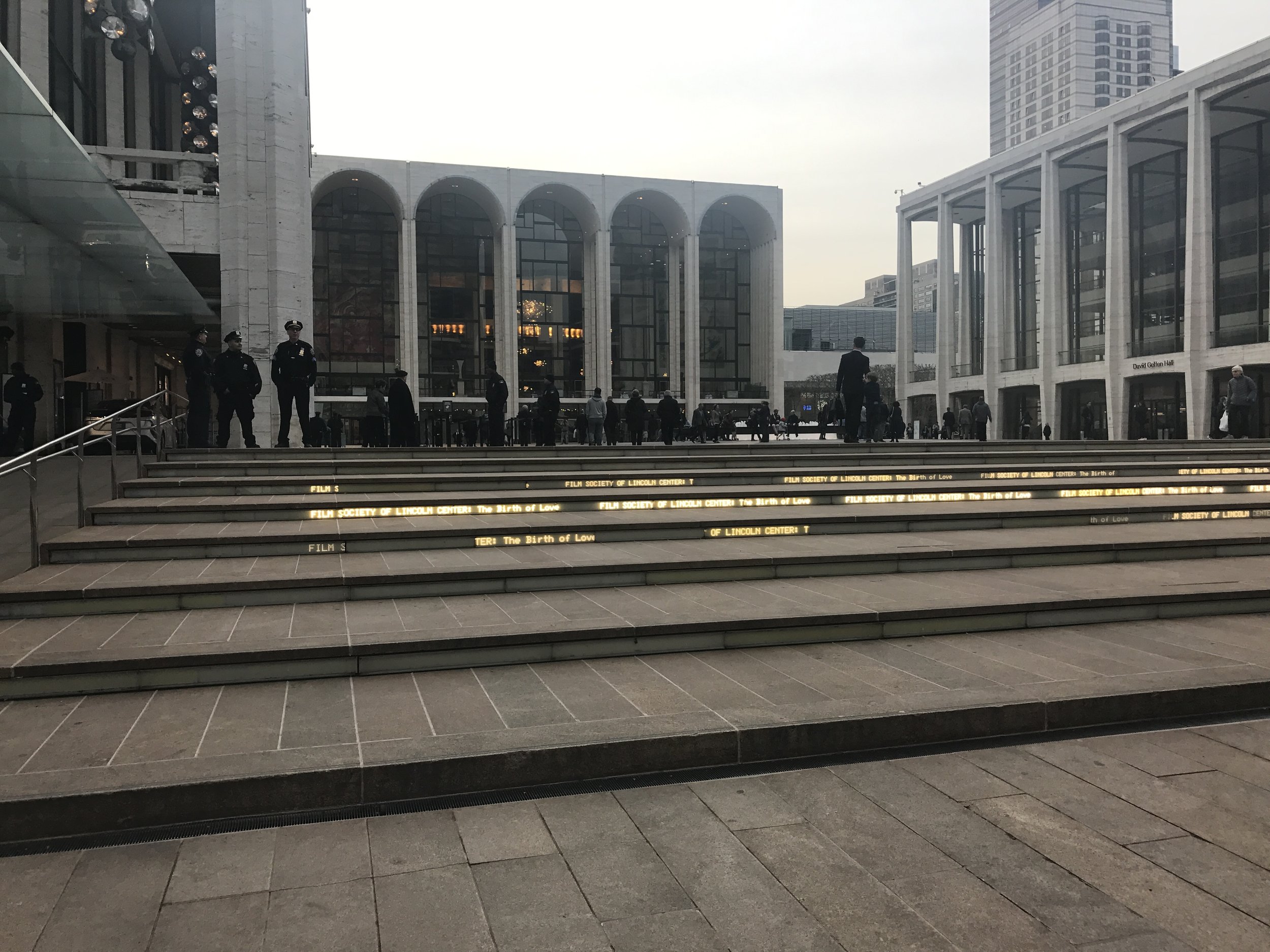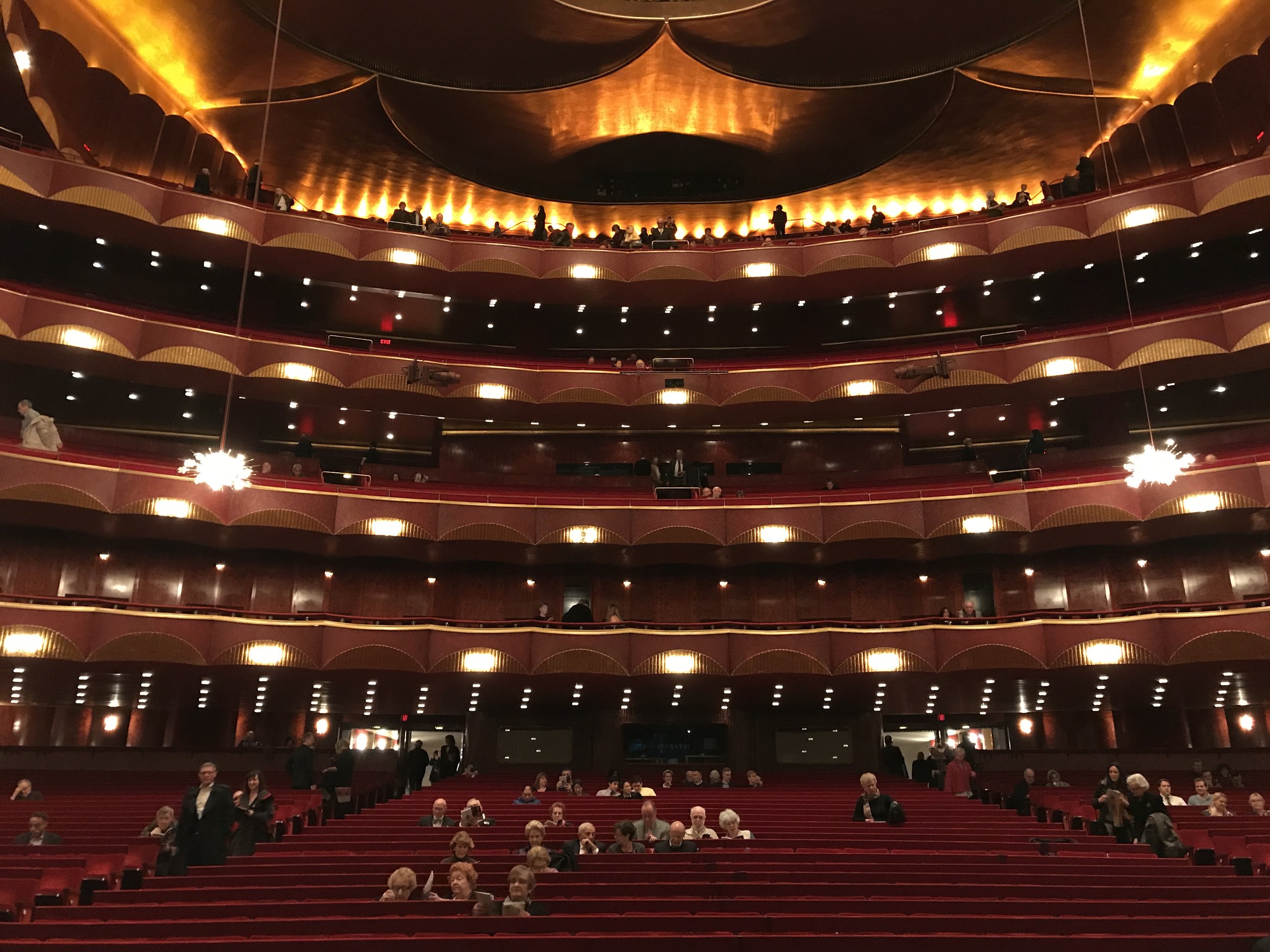For most U.S. opera fans, the Metropolitan Opera is our Mecca. The Met brings in the biggest name singers, employs an outstanding orchestra and chorus, can attract the most creative directors, and has the resources to stage the most elaborate productions and broadcasts many of them into cinemas around the nation. It produces about 25 different operas every season from September to May, three times as many as its closest rivals. Going to NYC to see a Met opera is exciting – always - as it was on last Wednesday evening awaiting Fidelio. As I sat there, I remember thinking that, really, the Metropolitan Opera is just a concert hall, and the audience and performers are just people, but when they come together sometimes magic happens. Wednesday night, the audience was there and so were the quality performers. They were armed with a great story, and the music by Beethoven alone makes it worthwhile. All the ingredients were there for a great production of Fidelio, but for me, honestly, the magic was sparse. I found it to be a very good production, but not a great production.
Hanna-Elizabeth Muller as Marzelline, Falk Struckmann as Rocco, and Adrianne Pieczonka as Leonore. Photo by Ken Howard; courtesy of the Metropolitan Opera.
My journey in opera fandom added a new lane at this performance. Strangely, I found myself in a mood to be critical, even though I tend to be a very positive opera fan. Why? Perhaps it was a bit of undigested potato from dinner affecting my vision, a hopeful guess from Ebenezer Scrooge on encountering his first disturbing Christmas apparition. Or maybe familiarity does breed, not contempt, but a more critical attitude. Fidelio is the story of Leonore, who disguises herself as a man in an attempt to free her husband unjustly held in prison. Fidelio (the name she takes as a man) is my third viewing of her story since February . First, there was French composer Pierre Gavaux’s version, titled Leonore and performed by Opera Lafayette, and shortly thereafter, an earlier version of Beetoven’s own Fidelio, titled Leonore and performed by the Washington Concert Opera. Both of those performances were excellent. It is possible that these experiences raised the bar for my satisfaction or simply had shorn Fidelio of its novelty. This thought spurs me to offer a theorem: opera criticism was born when someone attended an opera for the third time; professional critics were born when someone asked such an attendee what they thought of the opera and a light bulb went on. Henceforth, this will be known as Rogers’ Rule of Three: your third viewing of the same opera will be as a critic. My assertion is made even more cogent by the fact that my three Leonores were the same story, but significantly different operas.
Adrianne Pieczonka as Leonore and Klaus Florian Vogt as Florestan. Photo by Ken Howard; courtesy of the Metropolitan Opera.
Let’s go now to the moment I found most poignant, most magical, in the Met’s Fidelio. It wasn’t the rejoining of Leonore and her husband, Floristan, or the arrival of the regional minister to save the day, though these scenes were affecting as well; this probably does attest to my familiarity with the story. The moment came in act I when Fidelio, in a desperate attempt to find her husband, opened all the cells and allowed the prisoners to move out into the prison courtyard. These appeared to be the world’s best behaved prisoners, but let’s assume they were all wrongfully incarcerated political prisoners, as was Floristan. They stood and sang wistfully and beautifully “The Prisoner’s Chorus” a gripping aria that begins, “Oh, what a pleasure once again, Freely to breathe the fresh air!” With freedom seeming to be playing defense around the world today, I was momentarily connected to the many political prisoners in the world who might be feeling this sentiment, if not singing this aria, on getting a rare breath of fresh air in the open. This I think attests to the power of Fidelio and was surely Beethoven’s intent.
The singers were impressive. Canadian Adrianne Pieczonka has a lovely, strong soprano voice and played Fidelio with spunk and determination, yet with a vulnerability that made you know she would need both help and luck to set Floristan free. Marzelline was played by soprano Hanna-Elizabeth Muller, appearing in her first role at the Met; her strong, clear voice drew a favorable response from the audience. Klaus Florian Vogt as Floristan had a voice light in timber and projected easily throughout the house. He did not fit the image of haggard and worn with suffering in his voice I had imagined for the role, but I loved his voice and singing. In supporting roles, David Portillo as Jaquino, a suitor of Marzelline, Greer Grimsley as Pizarro, the villain who imprisoned Floristan, and veteran Met star James Morris, as minister Don Fernando, were solid in their roles. My favorite was base-baritone Falk Struckmann. He convincingly played Rocco with engaging singing and acting that helped hold the story together.
Final scene where Leonore is praised by all. Photo by Ken Howard; courtesy of the Metropolitan Opera.
Now to descend again into the darkness, I found the orchestra to be lackluster. What's wrong with me? It seemed spirited enough, but except for moments of exalting freedom, it did not seem to add much to the pathos of the scenes. My ear is untrained, but I thought I heard three repetitions of the same musical phrase near the end of the overture that sounded like the woodwinds and perhaps brass were out of sync; although I liked the sound they made; Beethoven should have thought of it. The orchestra also seemed underpowered from where I sat in good orchestra seats.* The chorus on the other hand was able to push me back in my seat and sang beautifully, though to my taste preferring power over pathos too often, but perhaps that is what the maestro intended. It does not take much to stage Fidelio, a prison courtyard, a dungeon, and an open area, which were fine in this production. At first I felt critical of the direction, but maybe it is just that the direction is challenged by the story's open questions which were not resolved: the Marzelline infatuation with Fidelio was featured at the beginning and only dealt with facial expressions; at the conclusion included for no clear reason was an aria by Rocco about the need for money in marraige; as mentioned before, the well-behaved prisoners, and finally, how quickly Pizarro gives up on hearing the trumpet announcing the arrival of the minister.
All criticisms aside, my immersion in Leonore has been highly entertaining and enlightening., about the Leonore story and about Beethoven's work ethic. A study of these three versions could easily take up the better part of a semester of college. Some additional comparisons of the three Leonores: I loved the music, which was not only different from Gavaux’s Leonore, but significantly different from Beethoven’s own earlier version, Leonore. In particular, the overture was changed by Beethoven for each version of his Leonore/Fidelo progression, and Leonore was reduced from three acts to two for Fidelio. The Leonore overture is about three times as long as that for Fidelio. Fidelio turns Jaquino into a cad, whereas for Leonore, he was more of a lovestruck young fellow. In Gavaux’s Leonore, Jacquino is accepted by Marzelline in the end. Rocco has become my favorite character in the drama. His struggle between wanting to keep his position and not being willing to engage in murder provides the only character with any depth. In the Gavaux version he actually becomes a hero in the end. Leonore is the stronger character, but is one dimensional. As I have said before, these three Leonores do not substitute for each other. If you have the opportunity to see any one of them or all of them, do so and you will be rewarded. If you have a choice, pick Gavaux if you want a version that emphasizes romance or Beethoven if you are the mood for love, justice, and the joy of freedom.
The Fan Experience: Going to the Met (outside and inside views above) is a thrill and cheap seats are an option for most performances, but in my experience, you must act early in the season to get cheap seats; at the Met those sell out first. Unfortunately, going to the Met from the DC area is expensive. My family does it as a mini-vacation once or twice a year. We usually drive, which on a good day can be done in about five hours and on bad days up to eight hours depending on traffic. Up and down I95 and thru a tunnel will set you back about $70 in tolls round trip; do get EZ Pass to save you a bunch of time. Overnight parking in NYC costs about $50-75. Bus, train, and airflights are available options at a price; cheapest is local bus to Penn Station in NYC at $50-75 each way. Taxis in NYC are usually plentiful, but just prior to show times it can be very difficult to flag down one not occupied; plan getting to the theater carefully. And hotels there are quite expensive, as you might expect; it’s a good place to use your travel points and free nights. However, if you can muster the effort and the finances, going to NYC is a treat in itself, and combined with an opera at the Met, is divine.
*I am wondering if my response to the power of the orchestra is a pit effect one encounters when sitting close to the stage, with the sound projected up and past you before it resonates off the walls. I had the same response to the orchestra in similar seats for WNO’s Marriage of Figaro at the Kennedy Center. I found the sound to be great in KC’s first and second tier seats for the Ring Cycle. I will have to figure this out.





